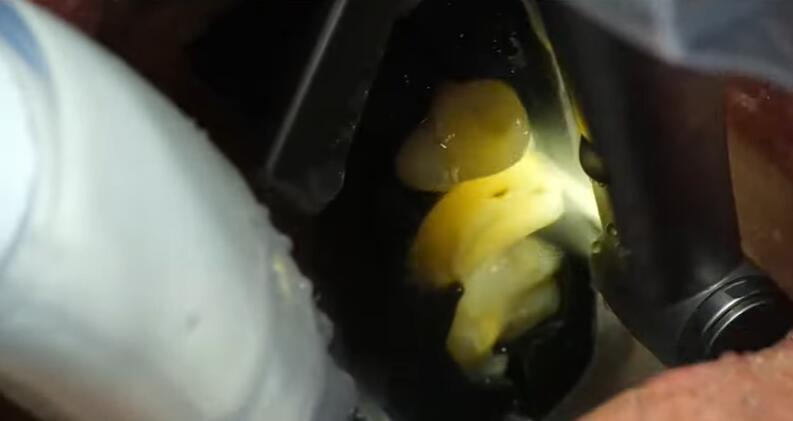Artificial intelligence is profoundly changing the medical industry, and the breakthrough results of Boston startup Perceptive are even more impressive. The world's first fully automatic AI robot dentist developed by them not only achieves diagnosis and treatment speed 8 times that of human doctors, but also brings two key technological innovations: OCT 3D imaging system and efficient robotic dental surgery system. This heralds that future dental treatment will enter a new era that is more precise, safe and efficient, bringing a better experience to patients.
At the forefront of medical technology, the application of AI is constantly breaking through our imagination. Perceptive, a start-up company from Boston, has successfully developed the world's first fully automatic AI robot dentist and has performed the first full dental surgery on a human patient. Its diagnosis and treatment speed has reached 8 times that of a human doctor.
This innovation is more than just a leap in speed, Perceptive also announced two breakthrough technologies that promise a future of dental treatment that will be more precise, safe and efficient. First, the OCT3D imaging system uses optical coherence tomography technology to generate 3D images of the inside of the teeth in the oral cavity, deep below the gum line and into the bone, providing unprecedented resolution and positional accuracy.

Compared with traditional X-rays, OCT imaging not only avoids harmful radiation, but also has a higher accuracy rate. The moving structure method adopted by Perceptive solves the problem of image blur through shorter exposure time and mobile scanner technology, allowing the pathology positioning accuracy to reach within 20 microns, with an accuracy rate of over 90%.
Secondly, the robot dentist’s diagnosis and treatment system has completely changed the traditional dental surgery process. Taking dental crown installation as an example, Perceptive's robot can complete the entire process in a few minutes in a single visit. When the patient first visits, the dentist uses an OCT imager to scan the teeth, and the robot plans the drilling path based on the data and pre-makes the crown. When the patient arrives, the robot drills the holes in a matter of minutes, the perfect-fitting permanent crown is cemented in place, and the treatment is complete.
Safety is an important consideration in the design of Perceptive robots. The robot is connected to the patient's body while working, keeping the mouth open through a device called a "bite block" to prevent jaw fatigue. The robot's end effector is physically connected to the bite block, so even if the head moves, the drill can instantly compensate, ensuring surgical accuracy.
Perceptive's robotic dentist not only improves surgical efficiency, but also provides better diagnostic and treatment results. Robots can install restorations with greater precision than traditional restorations, extending their lifespan. In addition, the robot's physical balance system and the dentist's ultimate safety control ensure the safety of the surgery.
Although Perceptive's robotic dentist has yet to be commercialized, it has been successfully tested on humans and has raised $30 million in funding. As a next step, Perceptive will conduct pivotal clinical trials with the FDA, and if all goes well, it is expected to bring this revolutionary technology to the public within a few years.
This breakthrough not only demonstrates the potential of AI in the medical field, but also brings unprecedented precision and efficiency to dental treatment. With the continuous advancement of technology, we have reason to believe that future dental diagnosis and treatment will be more humane and personalized, bringing a better experience to patients.
Reference: https://newatlas.com/health-wellbeing/robot-dentist-world-first/
The successful development and testing of Perceptive’s AI robot dentist marks another major breakthrough of artificial intelligence in the medical field. In the future, as the technology matures and supervision is improved, this technology is expected to revolutionize dental treatment and benefit more patients. Let's wait and see.